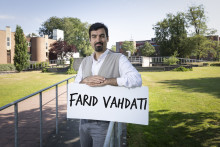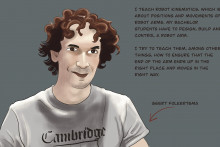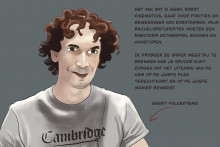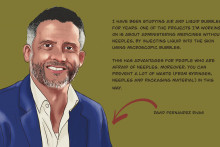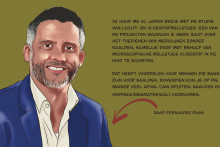Farid Vahdati has been teaching at the UT for only two years, but he has already managed to win the Civil Engineering’s Best Teacher of the Year in 2017. Teaching is in his blood after all. His grandfather was a preacher and his father is also a university teacher. Vahdati has always enjoyed explaining things to his peers. He loves seeing the ‘aha moment’ on people’s faces. Achieving that brings him a lot of gratification.
Keep it interactive. That is the main rule Vahdati follows when teaching his classes. He is on a mission to connect with his students and he will not retreat until that happens. The teacher himself comes from Iran, from culture – as he says – that puts a wall in between the lecturer and the students, a barrier that he tries hard to remove.
For the Assistant Professor, interaction with students is the most important and the most enjoyable part of the job. Which is also why he is happy to be teaching in the Netherlands, where students are used to being heard. He likes to ask questions and carefully listens to the answers, which decide what the main focus of the lesson will be. Sometimes this means the lecture turns into one big Q&A session, which he considers fun and fulfilling - so much so that he often gets carried away and needs to keep his students in the classroom overtime. He is just very enthusiastic about explaining the topic at hand.
Pictures and animations play a big role in Vahdati’s classes. He tries to make everything visual and spends long hours preparing his slides, using real examples from everyday life to explain abstract concepts. The teacher prefers to use visualizations rather than words, but admits that jokes are a common occurrence in his classes. Sense of humor is his weapon of choice if it comes to creating a comfortable atmosphere and connecting with students, something he considers a vital characteristic of a good teacher – together with being clear about what is expected.
Vahdati spends a lot of time on explaining what the expectations are and how students can fulfil all the course’s requirements. He uses so called formative feedback. All of his assessments have two phases. After students deliver the initial assignment, he provides them with a very detailed feedback and a tentative grade, which essentially says ‘if you don’t improve, this is the grade you will get at the end of the course’. Most students do improve throughout the semester, and they seem to appreciate the method. As the teacher says, if the students are happy, he is happy.


